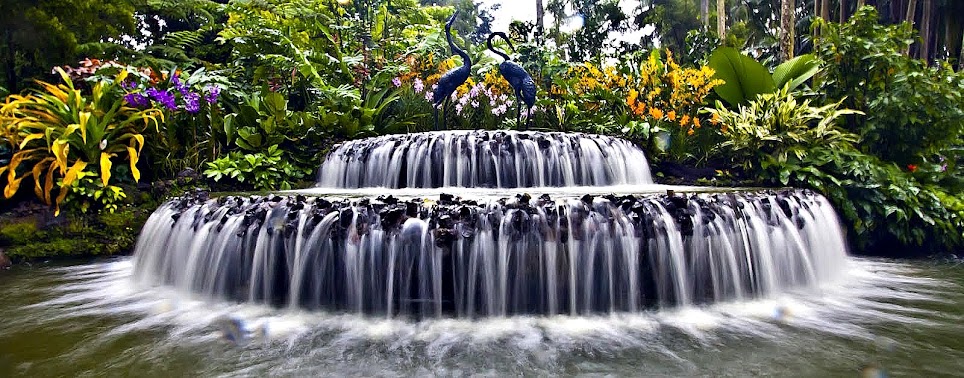Grow Chili Pepper Plants From Seed
By Aaron Hickey
Once you decide what kind of peppers you want to grow, you need to get some seeds. You can find a variety at the supermarket in the spring time or the gardening section of any home repair store. If you want to grow an exotic species, you may have to buy your seeds online. An easy way to gather your seeds is to buy the type of chilies you want to grow at the supermarket. You can scrape out the seeds and grow them. Rinse them off and lay them on paper towels to dry. Be sure to wear protective gloves when handling hot peppers and wash your hands thoroughly when done harvesting the seeds.
Before planting, you will need to germinate your seeds. The main requirements for the seed to germinate are heat, moisture and oxygen. Start the process by layering them between moist, not wet, paper towels and placing them in a plastic bag. Seal the bag and place it in a warm location, the top of the refrigerator works well. Germinating first helps to speed up the growing process. Keep the seeds moist and in the plastic until they start to swell or sprout. This process should only take a day or two.
Conditions need to be right in order for the seedlings to grow. Chile peppers grow best in warm sunny climates. The perfect temperature is 23-30 degrees Celsius (about 73-86 degrees Fahrenheit). They need at least 6 hours of sunlight daily, but more is even better. All peppers originally come from tropical locations so you should try to create that type of environment for them.
If you live in a warm climate, you can plant the germinated seeds directly into the ground. If you live in a cool region, you can start the plants indoors. When all danger of frost has past, transplant the sprouts outside. Do not start with a large container as this will encourage more root growth and less growth in the stems and leaves.
Plant your starters in small containers filled with potting soil. Fill your pot � full of soil then add the sprout, cover with a � inch of soil and water. Do not over water as you just want the soil to be moist at this stage. Cover the containers with plastic wrap. Doing this will help your sprouts to grow faster. The plastic wrap will hold in the heat and moisture, and you will not need to water them as often. Place the covered pots in a warm, sunny place, like a windowsill.
Following these guidelines will produce strong, hardy sprouts. During the germination stage and the first planting, your chilies do not require a lot of time or attention. All you need to do is check them about every other day to make sure they are moist and warm. The sprouting time will vary depending on the type of pepper you selected, usually between 2-4 weeks. When the plants begin to show above the soil, you will be ready to start the next phase of growing your chili peppers.
You have grown your chili seeds into sprouts, what comes next? During the next stage, your plants will require a little more care and attention. You do not have to be a garden guru to be successful. Your sprouts will need more direct light at this stage. A windowsill or outdoor greenhouse is perfect. Here are some tips to get your sprouts from starters to fruit bearing plants.
Once the seedlings appear above the soil, remove the plastic covering. Your baby chilies will grow two sets of starter leaves. The seed leaves and the true leaves. Pepper plants usually grow their leaves in pairs. When the first set grows in, go ahead and clip them off. These leaves are not necessary and only take away from the energy your plants need to grow. Keep the soil moist, not wet, and continue to give the sprouts plenty of light, at least 6 hours a day.
When the true leaves appear, it is time to re-pot the sprouts. Keep the containers small, no bigger than 4-6 inches in diameter. Fill the pots about half full of fresh soil. Gently pull the sprouts from the starter pots and place in the new soil. Add soil around the stems until the pots are about � full. Water just enough to moisten them and place in a well-lit area. Your plants will need to be watered more frequently at this stage. Check the soil every other day. If the leaves start to turn brown around the edges, they are getting too much water.
Your will need to transplant your peppers one more time. You need to re-pot them when the roots start to grow through the drainage holes in the containers. If you are going to grow them in an outside garden make sure, all danger of frost has past. Peppers also do well in container gardens either indoors or out. Get the plants ready to move outdoors by placing them outside, in the sun, for a few hours every day.
At this stage, you can begin fertilizing your chilies. Choose a fertilizer that has the right balance of nitrogen, phosphorus and potassium. Tomato food works well for peppers. Buy the liquid fertilizer and mix half what the directions call for with water. Feed your plants every other watering and they will produce more peppers. The plants will be susceptible to insects, like aphids, during this time. You can use a mild insecticide as needed.
With proper care, your plants will soon start to grow flowers. These flowers are the first stage of the pepper pods. How long this takes, depends on the type of chili you planted. The flowers are usually white or yellow in color and not very large. Pollination is the process that turns the flowers into chili pods.
If your plants are outdoors, bees will pollinate the chilies naturally. When growing them indoors, you will need to pollinate them yourself. You can do this by using the end of your pinky finger and gently rubbing it on the flowers. Another way is to use a small paint brush. Either method will work and ensure that your plants will bear fruit.
As the pod develops, you will notice the center of the flowers turning green and swelling. Soon the flowers will fall off, and you will see the chili pods developing. Continue to care and nurture your plants. Water and feed them as necessary and make sure they get plenty of light. In no time, you will be able to harvest and enjoy the fruits of your labor.
Hey guys, my name is Aaron and I love growing chili plants. Come visit my blog at http://growchilipepper.com for more great information. Here you will find absolutely everything you'll ever need to know to how to growing chili pepper plants and feel positive about starting a hobby incredibly fast. You'll have fresh peppers in weeks, experience the satisfaction of growing your own.
Article Source: http://EzineArticles.com/?expert=Aaron_Hickey
http://EzineArticles.com/?Grow-Chili-Pepper-Plants-From-Seed&id=8766032








.jpg)